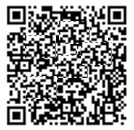[1] 卢春容, 房宏霞, 陆普选, 等. 2021 WHO全球结核病报告:全球与中国关键数据分析[J/CD]. 新发传染病电子杂志, 2021, 6(4): 368-372.
[2] INTERNATIONAL DIABETES FEDERATION. IDF Diabetes Atlas. 8th edn[EB/OL]. [2017-07-11]. http://diabetesatlas.org/resources/2017-atlas.html.
[3] PEREZ-NAVARRO LM, RESTREPO BI, FUENTES-DOMINGUEZ FJ et al. The effect size of type 2 diabetes mellitus on tuberculosis drug resistance and adverse treatment outcomes[J]. Tuberculosis, 2017, 103: 83-91.
[4] 杨松,严晓峰. 结核病与糖尿病:相互关系和诊治的研究新进展[J/CD]. 新发传染病电子杂志,2018,3(4):234-238.
[5] WORLD HEALTH ORGANIZATION.Latent TB Infection: Updated and Consolidated Guidelines for Programmatic Management [EB/OL]. Geneva, Switzerland: World Health Organization, 2018.
[6] HAIDER M, AL-RASHED F, ALBAQSUMI Z, et al.Candida albicans induces foaming and inflammation in macrophages through FABP4: its implication for atherosclerosis[J]. Biomedicines, 2021, 9(11): 1567.
[7] SHIM D, KIM H, SHIN SJ.Mycobacterium tuberculosis infection-driven foamy macrophages and their implications in tuberculosis control as targets for host-directed therapy[J]. Front immunol, 2020, 5(11): 910.
[8] GUERRINI V, PRIDEAUX B, BLANC I, et al.Storage lipid studies in tuberculosis reveal that foam cell biogenesis is disease-specific[J]. PLoS Pathog, 2018, 14(8): e1007223.
[9] CAMWRON AM, CASTOLDI A, SANIN DE, et al.Inflammatory macrophage dependence on NAD(+) salvage is a consequence of reactive oxygen species-mediated DNA damage[J]. Nat Immunol. 2019, 20(4): 420-432.
[10] 中华人民共和国国家卫生和计划生育委员会. 肺结核诊断标准(WS 288—2017)[J/CD]. 新发传染病电子杂志, 2018, 3(1): 59-61.
[11] AMERICAN DIABETES ASSOCIATION.Introduction: Standards of medical care in diabetes 2021[S]. Diabetes Care, 2021.
[12] 中华医学会糖尿病学分会. 中国 2 型糖尿病防治指南 (2017 年版)[J]. 中华糖尿病杂志, 2018, 10(1): 4-67.
[13] 诸骏仁,高润霖,赵水平,等. 中国成人血脂异常防治指南(2016年修订版)[J],中国循环杂志,2016, 16(10): 15-35.
[14] 谭运彩,袁媛,杨双喜,等. 二甲双胍与2型糖尿病患者肺结核感染风险的倾向性评分匹配分析 [J/CD]. 新发传染病电子杂志, 2021, 6(3): 202-205.
[15] 方燕龄,魏裕涛,肖新怀,等. 老年2型糖尿病伴冠状动脉硬化患者的生存质量影响因素分析[J]. 实用医学杂志, 2020, 36(23): 3250-3255.
[16] VRIELING F, RONACHER K, KLEYNHANS L, et al.Patients with Concurrent Tuberculosis and Diabetes Have a Pro-Atherogenic Plasma Lipid Profile[J]. EBioMedicine, 2018, 6(32): 192-200.
[17] DUTTA NK, BRUINERS N, PINN ML, et al.Statin adjunctive therapy shortens the duration of TB treatment in mice[J]. J Antimicrob Chemother 2016, 71(6): 1570-1577.
[18] VRIELING F, WILSON L, RENSEN PCN, et al.Oxidized low-density lipoprotein (oxLDL) supports Mycobacterium tuberculosis survival in macrophages by inducing lysosomal dysfunction[J]. PLoS Pathog, 2019, 15(4): e1007724.
[19] DONG Z, SHI J, DORHOI A, et al.Hemostasis and lipoprotein indices signify exarbated lung injury in tuberculosis with diabetes coorbidity[J]. Chest, 2018, 153(5): 118. |



